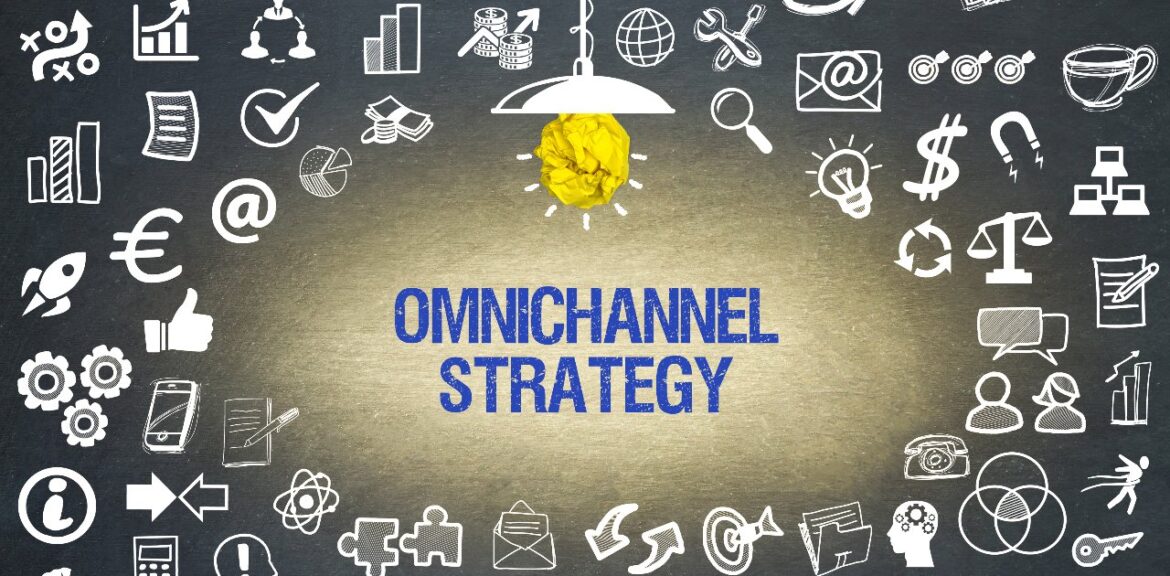In today’s fast-paced digital landscape, customers interact with brands across multiple channels. An omnichannel marketing strategy is essential for businesses aiming to provide a seamless and integrated customer experience. Here’s a step-by-step guide to help you create an effective omnichannel marketing strategy.

What is Omnichannel Marketing?
Omnichannel marketing is a multi-channel approach that provides customers with a cohesive and unified shopping experience, regardless of how they interact with the brand. This strategy combines traditional and digital channels to ensure a consistent message and user experience.
Steps to Create an Omnichannel Marketing Strategy
1. Understand Your Audience
Research Your Customers: Start by gathering data on your target audience. Understand their preferences, behaviors, and pain points through surveys, analytics, and social media insights. Creating detailed customer personas can help you visualize your audience’s needs.
Segment Your Audience: Segment your audience based on demographics, interests, and behaviors. This segmentation allows you to tailor your messaging and offers to specific groups, enhancing relevance and engagement.
2. Map the Customer Journey
Identify Touchpoints: Map out all the touchpoints where customers interact with your brand, from social media and email to your website and physical store. Understanding these interactions will help you identify areas for improvement.
Analyze Customer Behavior: Use analytics tools to track customer behavior at each touchpoint. This data can reveal how customers navigate their journey, helping you optimize each stage for a smoother experience.
3. Create a Cohesive Brand Message
Develop a Unified Voice: Ensure that your brand messaging is consistent across all channels. This includes tone, language, and visuals. A cohesive brand identity builds trust and familiarity with your audience.
Tailor Content for Each Channel: While maintaining a unified voice, adapt your content to suit each channel’s unique characteristics. For example, use engaging visuals for social media, informative articles for your blog, and concise messaging for emails.
4. Integrate Your Channels
Use Technology: Implement marketing automation tools that allow you to integrate various channels. These tools can help synchronize your messaging, track customer interactions, and analyze performance across platforms.
Create a Centralized Database: Maintain a centralized customer database to gather insights from different channels. This data can inform your marketing efforts, enabling personalized communication and offers based on customer behavior.
5. Leverage Data and Analytics
Track Performance: Use analytics tools to monitor the performance of each channel. Analyze key metrics such as conversion rates, engagement levels, and customer feedback to understand what’s working and what needs improvement.
A/B Testing: Conduct A/B testing to compare different approaches and optimize your campaigns. This method helps identify the most effective strategies for reaching your audience.
6. Foster Customer Engagement
Personalize the Experience: Utilize customer data to create personalized experiences. Address customers by name, recommend products based on past purchases, and tailor content to their preferences.
Encourage Interaction: Engage with your audience through social media, email newsletters, and customer support. Foster a two-way conversation to build relationships and trust.
7. Continuously Improve Your Strategy
Gather Feedback: Encourage customers to provide feedback on their experiences. Use surveys, reviews, and social media interactions to gain insights into their satisfaction levels.
Adapt and Evolve: The digital landscape is constantly changing, so be prepared to adapt your strategy as needed. Stay informed about industry trends and emerging technologies to ensure your omnichannel marketing remains effective.
Conclusion
Creating an omnichannel marketing strategy requires careful planning and execution. By understanding your audience, mapping their journey, integrating your channels, and continuously optimizing your approach, you can deliver a seamless customer experience that drives engagement and loyalty. Embrace the power of omnichannel marketing to stay ahead in a competitive marketplace and foster lasting relationships with your customers.


No responses yet